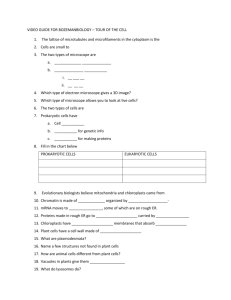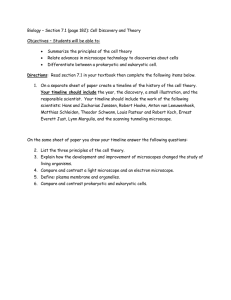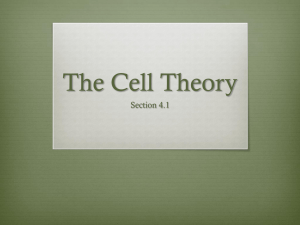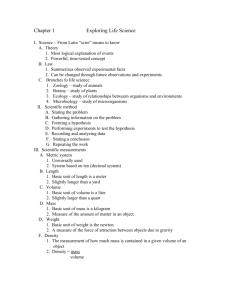3.1 POWERPOINT FILL IN NOTES CELL THEORY PAGE 2 3.1
advertisement
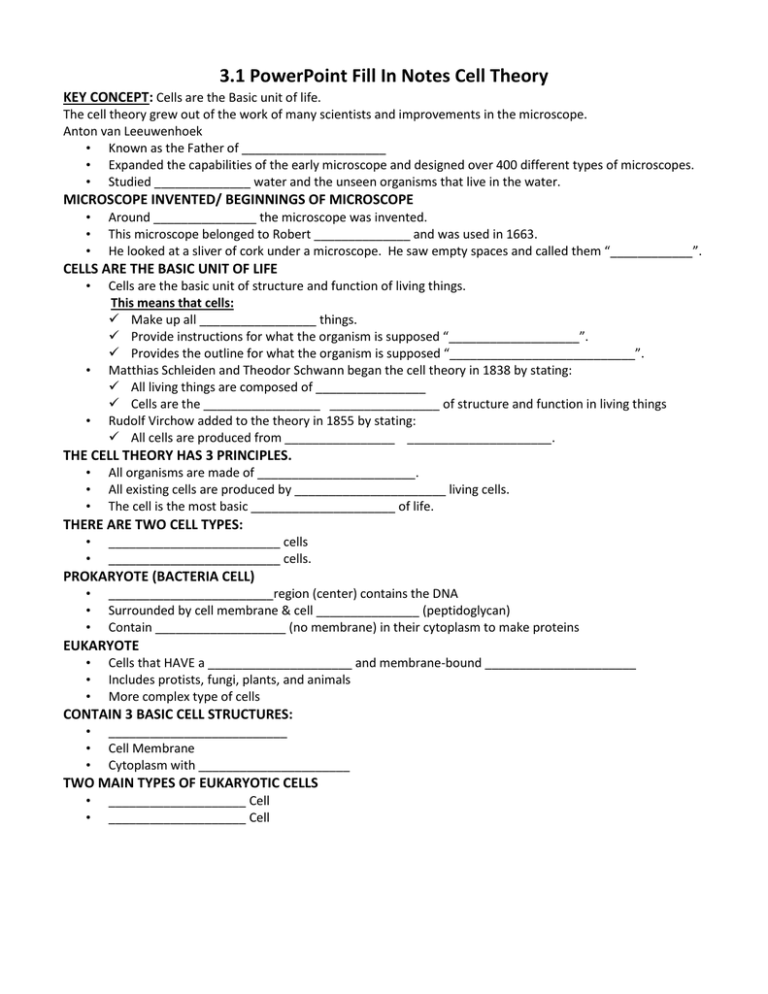
3.1 PowerPoint Fill In Notes Cell Theory KEY CONCEPT: Cells are the Basic unit of life. The cell theory grew out of the work of many scientists and improvements in the microscope. Anton van Leeuwenhoek • Known as the Father of _____________________ • Expanded the capabilities of the early microscope and designed over 400 different types of microscopes. • Studied ______________ water and the unseen organisms that live in the water. MICROSCOPE INVENTED/ BEGINNINGS OF MICROSCOPE • • • Around _______________ the microscope was invented. This microscope belonged to Robert ______________ and was used in 1663. He looked at a sliver of cork under a microscope. He saw empty spaces and called them “____________”. CELLS ARE THE BASIC UNIT OF LIFE • • • Cells are the basic unit of structure and function of living things. This means that cells: Make up all _________________ things. Provide instructions for what the organism is supposed “___________________”. Provides the outline for what the organism is supposed “___________________________”. Matthias Schleiden and Theodor Schwann began the cell theory in 1838 by stating: All living things are composed of ________________ Cells are the _________________ ________________ of structure and function in living things Rudolf Virchow added to the theory in 1855 by stating: All cells are produced from ________________ _____________________. THE CELL THEORY HAS 3 PRINCIPLES. • • • All organisms are made of _______________________. All existing cells are produced by ______________________ living cells. The cell is the most basic _____________________ of life. THERE ARE TWO CELL TYPES: • • _________________________ cells _________________________ cells. PROKARYOTE (BACTERIA CELL) • • • ________________________region (center) contains the DNA Surrounded by cell membrane & cell _______________ (peptidoglycan) Contain ___________________ (no membrane) in their cytoplasm to make proteins EUKARYOTE • • • Cells that HAVE a _____________________ and membrane-bound ______________________ Includes protists, fungi, plants, and animals More complex type of cells CONTAIN 3 BASIC CELL STRUCTURES: • • • __________________________ Cell Membrane Cytoplasm with ______________________ TWO MAIN TYPES OF EUKARYOTIC CELLS • • ____________________ Cell ____________________ Cell [Type here] 3.1 POWERPOINT FILL IN NOTES CELL THEORY PAGE 2 • • • Eukaryotic cells have a _________________________. Prokaryotic cells do ________________ have membrane- bound ____________________ Prokaryotic cells do _______________ have a _______________________.

